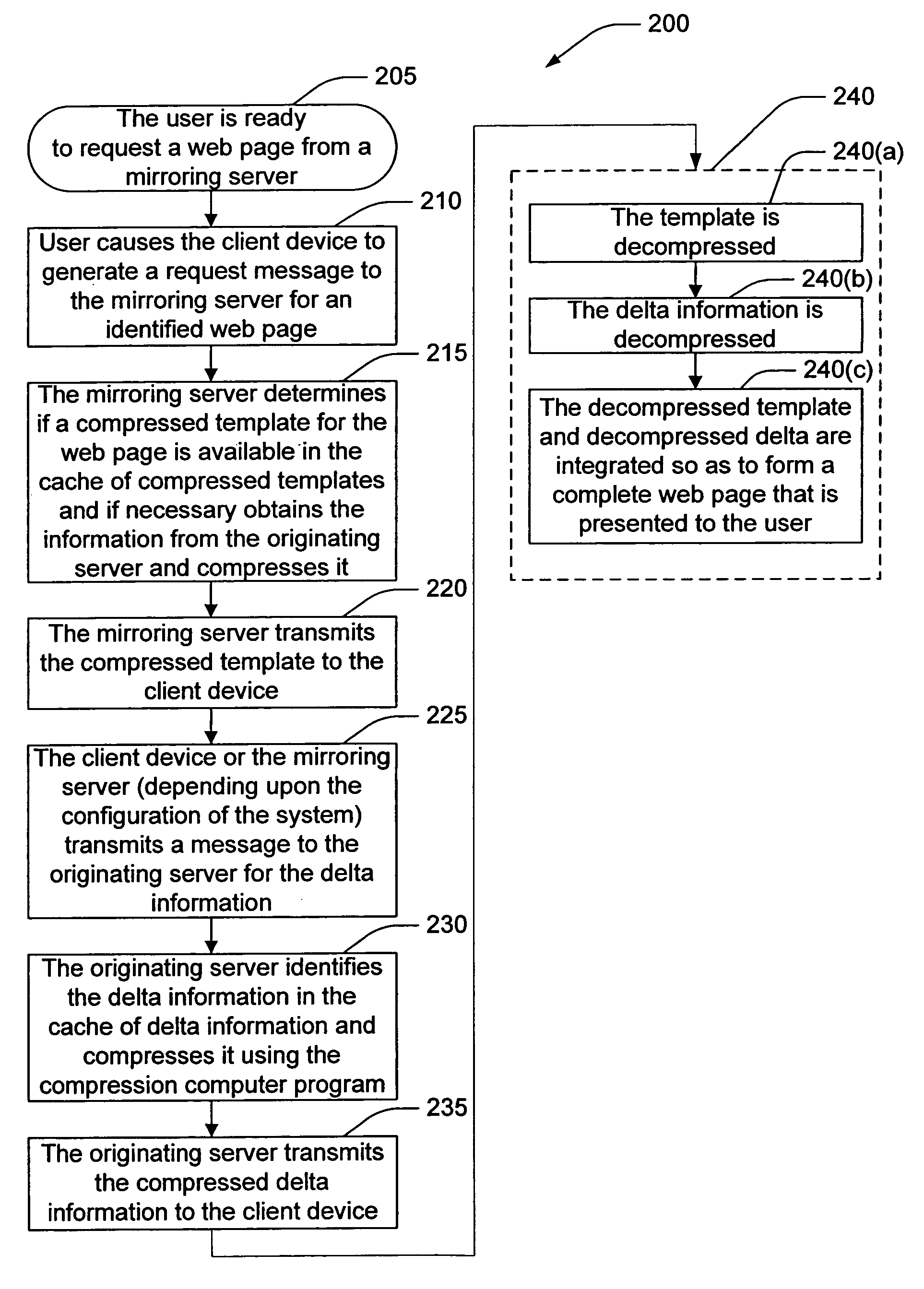Efficient compression using differential caching
a compression and differential caching technology, applied in the field of efficient compression using differential caching, can solve the problems of relatively small and achieve the effect of reducing the bandwidth needed to transmit the page, reducing computational resources, and reducing the amount of computational resources devoted to its compression
- Summary
- Abstract
- Description
- Claims
- Application Information
AI Technical Summary
Benefits of technology
Problems solved by technology
Method used
Image
Examples
Embodiment Construction
[0024]In the following description, a preferred embodiment of the invention is described with regard to preferred process steps and data structures. Those skilled in the art would recognize after perusal of this application that embodiments of the invention can be implemented using one or more general purpose processors or special purpose processors or other circuits adapted to particular process steps and data structures described herein, and that implementation of the process steps and data structures described herein would not require undue experimentation or further invention.
Lexicography
[0025]Originating Server—as used herein, an “originating server” takes on the role of a server in a client-server relationship and is the original provider of content to a client device or to a mirroring server.
[0026]Mirroring server—as used herein, a “mirroring server” includes any device that takes on the role of a server in a client-server relationship and that receives requests from client d...
PUM
 Login to View More
Login to View More Abstract
Description
Claims
Application Information
 Login to View More
Login to View More - R&D
- Intellectual Property
- Life Sciences
- Materials
- Tech Scout
- Unparalleled Data Quality
- Higher Quality Content
- 60% Fewer Hallucinations
Browse by: Latest US Patents, China's latest patents, Technical Efficacy Thesaurus, Application Domain, Technology Topic, Popular Technical Reports.
© 2025 PatSnap. All rights reserved.Legal|Privacy policy|Modern Slavery Act Transparency Statement|Sitemap|About US| Contact US: help@patsnap.com



